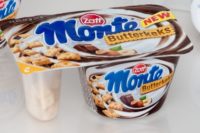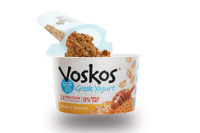
America's global dairy marketers are today different creatures than the ones that sent mostly surplus, subsidized, commodity butter and powder overseas in the early to mid-1990s. Now, almost 80% of our exports are commercial sales, with a special focus on high-value milk proteins and fractions, lactose, table and foodservice cheeses, infant formula, and ice cream. We've seen a turnaround in the level of commitment from our industry, too. Domestic attitudes toward dairy exports are shifting from an afterthought to an important long-range consideration.
Of course, the trading environment is different than it was a decade ago, too. Around the same time the Export Council was getting off the ground, the World Trade Organization (WTO) was emerging from the GATT talks, producing the first international trade treaty committed to reducing ag trade barriers. Meanwhile, the North American Free Trade Agreement (NAFTA) was implemented to eliminate tariffs between the United States, and Mexico; Canada, unfortunately, insisted that NAFTA omit its dairy provisions.
As forecast, a more open world trading system has brought new wealth to nations that have adopted market economies. Consumers in those lands, in turn, are developing new appetites for dairy products, fueling global demand faster than suppliers from Europe and Oceania can fulfill.
Also, the gradual dropping of market barriers made possible the spread of global sourcing around the world. And continued advances in technology and investments in research and product development have led to new products and new applications for dairy ingredients that were unimaginable a decade ago.
That's not to say that we've achieved all we can achieve. Far from it. World prices are still artificially deflated by massive export subsidies, and many of the world's best markets are kept out of reach by hefty access barriers. We're encouraged that recent talks under the Doha round resulted in a commitment from all members to eliminate export subsidies and move towards equalized access barriers. At least we'll be moving in the right direction.
In the meantime, there are new markets to conquer. May's signing of the U.S.-Central America Free Trade Agreement (CAFTA) is expected to further drive U.S. export demand. Additional deals on the table, such as those with Thailand or the much broader (and more distant) Free Trade Area of the Americas (FTAA) could open markets further.
We've learned that creating a favorable trading environment is key to our export success. Perseverance and commitment on the part of our exporters is the other piece of the puzzle. This year, our exporters' mettle has been tested, and the results are encouraging.
The U.S. dairy industry has grappled with record-high domestic prices and limited supply in 2004. A decade ago, under those conditions, suppliers would have been content to direct all their attention (and product) to the domestic market at the expense of their overseas customers. We are a different exporter now than we were then, and this year, and we haven't seen that happen.
Instead, our suppliers have taken advantage of favorable exchange rates, short supply from competitors in European and Oceania countries and solid demand in Asia and Latin America that have led to strong world dairy prices. At mid-year, overall exports were running ahead of prior-year levels in nearly all product categories.
It's fitting, then, that as USDEC celebrates its 10-year milestone, U.S. dairy exporters are enjoying solid business with even better future prospects.

